Letters from Lodi
An insightful and objective look at viticulture and winemaking from the Lodi
Appellation and the growers and vintners behind these crafts. Told from the
perspective of multi-award winning wine journalist, Randy Caparoso.
At 2024 ZAP, it is clear that California Zinfandel has finally grown up
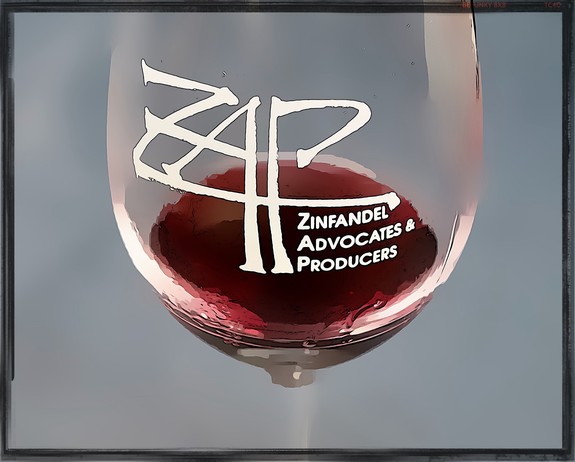
There is undoubtedly no organization that has done more for a single varietal category than Zinfandel Advocates & Producers, a.k.a. ZAP.
When ZAP started back in the early 1990s, Zinfandel was on the ropes. Many of the bigger, higher profile brands were dropping the varietal from their line-ups. Cabernet Sauvignon had become California's most important varietal red. The popularity of Merlot was growing rapidly, and Pinot noir was being aggressively planted in the cooler climate pockets of the state where it belonged.
This was despite the fact that, for over 100 years, Zinfandel was the tried-and-true grape, adapting far more easily to California's Mediterranean climate than any other variety of Vitis vinifera (i.e., cultivars belonging to the European family of wine grapes) aside from Carignan. At the time, the future of Zinfandel was in serious jeopardy.
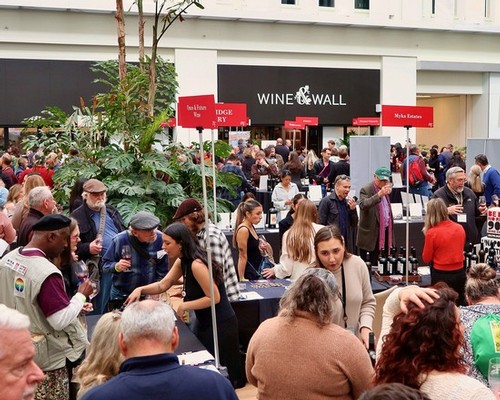
Zinfandel lovers at ZAP's 2024 Grand Tasting.
In fact, the only reason why many of California's classic "old vine" growths (that is, thousands of acres originally planted between the late 1800s and early 1960s) survived was because of White Zinfandel, a related but different varietal category. If not for the popularity of this soft, fruity pink wine, most of the old Zinfandel vineyards would have been ignominiously ripped out and replaced with Cabernet Sauvignon, Merlot, or (of course) Chardonnay.
The consumer craze for White Zinfandel has since subsided substantially. Just in time for a second resurgence of Zinfandel as a red wine of note.
I'd put this "second coming" of Zinfandel as happening only within the past ten or so years. It's that recent. Up until then, many diehard Zinfandel lovers appreciated the wine more for its full-bodied, ultra-dark, and ripe fruit profile, commonly described as "jammy." Like fruit cooked with sugar and pectin with alcohol... lots and lots of alcohol.
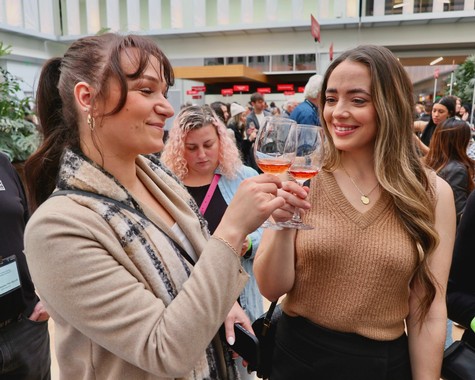
The faces of today's Zinfandel aficionados at ZAP's 2024 Grand Tasting.
Zinfandel, ironically, is not intrinsically a "jammy" wine. When planted, cultivated, and picked in more of a classic style—that is, not excessively high in sugar, which would require the addition of water and acidification to bring the wine into some semblance of balance—it is actually a delicate wine. Moderate in color, not connotatingly black and blue. Fragrant or floral, not so much jammy. Refreshingly bright and sprightly in natural acidity, not fat, flabby, or pumped up with fake acid or the artifice of wood from barrels or powdery "dust."
A ballet dancer, not an offensive lineman.
But as the old Western swing song goes, time changes everything. All during Zinfandel's stylistic evolution over the past 30 years, ZAP has been there, drumming up enthusiasm for the varietal, no matter what its various guises.
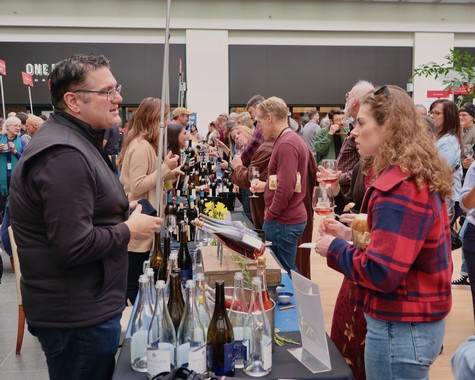
Perlegos Family Wine Co. co-owner/grower John Perlegos pouring his Clements Hills-Lodi-grown Zinfandel at the ZAP Grand Tasting.
This past Saturday (January 27), ZAP held its annual "Grand Tasting" in San Francisco. More diehard Zinfandel lovers can recall the first ten or twenty years of this yearly gathering as more of a wild and delirious party than a civilized tasting. This is what happens when hundreds of different bottlings are poured, most of them made in super-ripe styles and finished with 15%, 16%, and even over 17% alcohol.
2024's ZAP gathering was less of a rave and more of a soirée. There were smiles, murmurs, and discussions rather than madding crowds afflicted by uncontrollable laughter. Just twenty years ago glasses used to fall to the floor every few minutes, and Zin lovers would cheer. This year... no broken glass, no cheers, and no craziness.
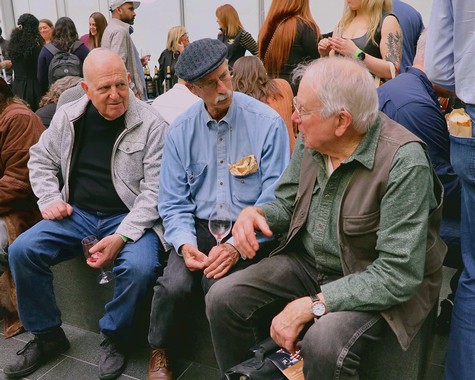
Longtime Zinfandel lovers at the 2024 ZAP Grand Tasting.
Does this mean Zinfandel is no longer "fun?" No. Good wine is always fun, but also something that stimulates the mind, not deadens it. Zinfandel, in other words, is now considered a serious wine, which it has always deserved to be.
It is, after all, a grape that is ideally suited to California. Many say, it is far more than Cabernet Sauvignon, Merlot, or Chardonnay because it is so simpatico to the climate. The earliest pioneers of the California wine industry recognized that from the start, which is why they planted so much more Zinfandel, far less Cabernet Sauvignon, and virtually no Merlot or Chardonnay (at least not up until the 1960s).
Zinfandel belongs. Not just in California, but also among the great wines of the world.
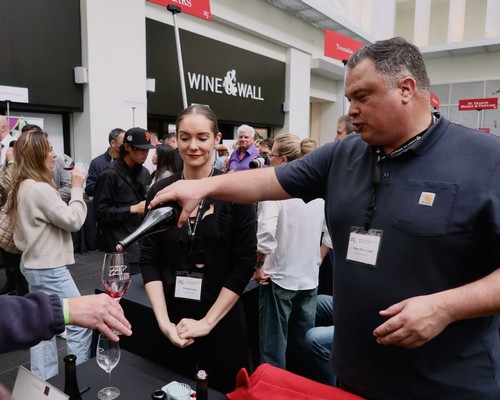
At the Turley Wine Cellars table during ZAP's 2024 Grand Tasting, Christina Turley (director of sales & marketing) and Tegan Passlacqua (winemaker) pour contrasting Zinfandels sourced from Contra Costa County, Howell Mountain and St. Helena in Napa Valley.
How Zinfandel grew up
Have American consumers finally freed themselves from the compulsion of "bigger the better?" I could not help thinking that, while eavesdropping on conversations at the tasting tables during the 2024 ZAP Grand Tasting: Zinfandel lovers seemed to be keen on finding, and appreciating, variations of Zinfandel, not the biggest ones possible.
Like American wine consumers in general, most Zinfandel advocates also appreciate brands, and so the biggest crowds were predictably gathered around the tables of the more established, justifiably prestigious producers such as Turley Wine Cellars, Ridge Vineyards, and Robert Biale Vineyards.
However, there were also, at times, crowds bulging two or three deep in front of tables of other producers such as Peachy Canyon Winery, Seghesio Family Vineyards, and Hendry Ranch Wines.
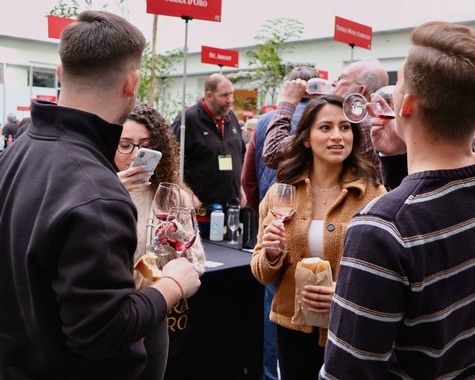
Zinfandel lovers at the 2024 ZAP Grand Tasting.
The thing about today's higher profile brands is that they each produce distinctive styles of Zinfandel. Distinctive, particularly, in terms of sensory qualities associated with different regions, or the specific vineyards from which their wines are sourced. The classic wine term for that is terroir, or "sense of place."
Turley Wine Cellars, for instance, was pouring Zinfandels from their Del Barba Vineyard in Contra Costa County, Dragon Vineyard in Howell Mountain-Napa Valley, and Hayne Vineyard in St. Helena-Napa Valley. The wines, like their respective appellations, couldn't be any different from each other: The Del Barba exhibits the flowery, finely textured qualities you get when growing Zinfandel in literal sand dunes right next to water; the Dragon possesses a far meatier textured, peppery spiced concentration of its high elevation mountain site; the Hayne showing its burly, ripe toned yet svelte, multifaceted character typical of old vines on the Napa Valley floor.
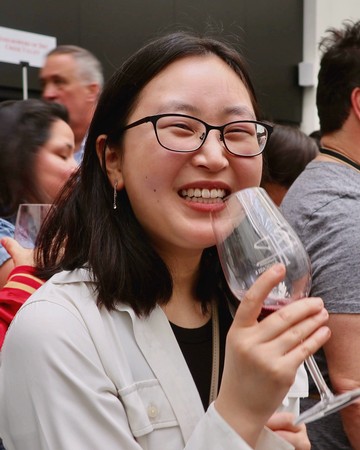
Serious Zinfandel buff at the 2024 ZAP Grand Tasting.
Christina Turley, the winery's director of national sales and marketing, shared one of the more interesting comments that I heard that day. Reflecting on the shifting popularity of Zinfandel in the marketplace, she said:
When I first started going out, Zinfandel was still considered a little old school, maybe something of a tired, predictable wine. Then a few years ago it became the wine of the hipper crowd, with a retro-cool image. Recently, it's gone back to being a little old school, but not in a bad way—it's old school because it's always been around, and the best ones come from really good old vineyards.
If anything, Zinfandel has become more real to consumers, and Zinfandel specialists in turn are crafting the wines to meet those expectations: Producing wines with less alcohol (14% now seems to be the average ABV) and far less oak influence, allowing the naturally floral/berry qualities of the grape to shine through. Not only that but also distinctive terroir-related profiles—attributes specific to sites, big or small.
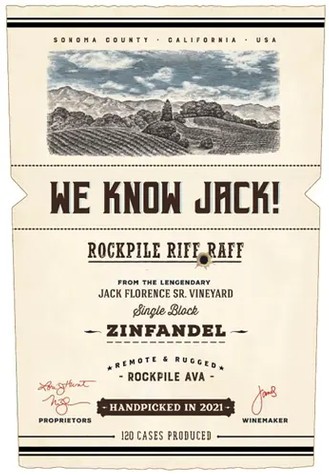
Label for We Know Jack! Zinfandel, is aptly named in tribute to legendary Rockpile-Sonoma grower Jack Florence Sr. whose grapes helped bring definition to this unique appellation.
For instance, Zinfandels grown in Sonoma County's Rockpile AVA generally retain the ironclad tannin/acid structure of Zinfandels associated with Rockpile. Zinfandels from Lodi or Napa Valley's Coombsville AVA invariably have earthy/loamy characteristics that make them all the more interesting. There is often a startling minerality to Zinfandels grown on the white calcareous rocky slopes of Paso Robles. Russian River Valley Zinfandels are typically luxurious in their black fruit bearishness. There are often funky/herby characteristics in Sonoma Mountain Zinfandels, and the funkier the better. And on and on.
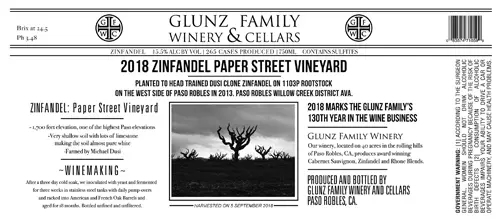
Label for Glunz Family Paper Street Vineyard in Paso Robles Willow Creek District, producing Zinfandels with almost startling minerality and elevated acidity, typical of the varietal grown on this region's calcareous slopes.
Zinfandel, in other words, has finally grown up as a varietal category because it is now allowed to taste like where it actually comes from, not ironed into the caricatures of varietal character typical just twenty, or thirty years ago. It's as if the grape is finally comfortable in its own skin. Advocates are more cognizant, vintners more sensitive, and media... well, it always takes media (i.e., journalists, especially 100-point proponents) a little more time to catch up to what consumers are enjoying and the industry is producing.
There is still, of course, brand-related stylization involved. It will take a long time before that goes away, since wineries have to compete, and one way to compete is to establish distinctive sensory markers associated with brands.
At the same time, though, there is a growing respect for regional styles as well as a greater appreciation for the individuality of vineyards. Sure, I'd like to see wineries that produce two, three, even five or six different vineyard-designate Zinfandels begin to fashion their wines to be a little more distinct from each other, instead of slavishly adhering to "house style." But that won't happen overnight.
The important thing is that Zinfandel styles are making progress as we speak. And as a Zinfandel lover myself, I say "Hallelujah!"
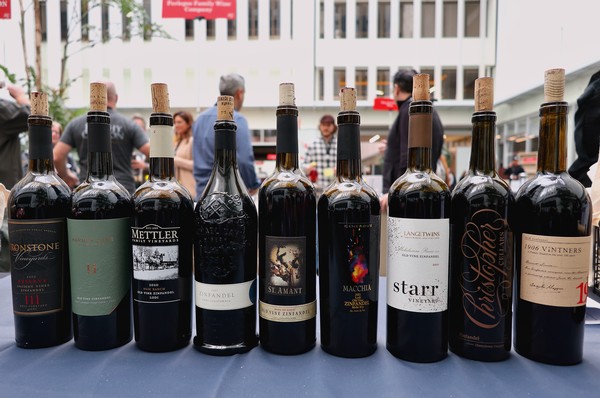
Lodi-grown bottlings poured at the Lodi Wine table during ZAP's 2024 Grand Tasting.
Notes on Lodi Zinfandels
A few words on Lodi-grown bottlings shown at ZAP's 2024 Grand Tasting:
2021 Perlegos Family Wine Co., Stampede Vineyard, Clements Hills-Lodi—Luminous, penetrating, pure, and exuberant black cherry perfume lifted by its lively, zesty, remarkably restrained medium-weight body (13.8% ABV). In a way, un-Lodi-like in its lightness and acidity, yet very Lodi-like in its clarity of varietal perfume.
2020 Ironstone Vineyards, Rous Vineyard Reserve, Mokelumne River-Lodi—Showing the classic flowery (violet-like), mildly herby, and blue/red fruited qualities of this ancient vine growth (planted in 1909) in a rounded, fleshy medium-full body with positively negligible oak influence.
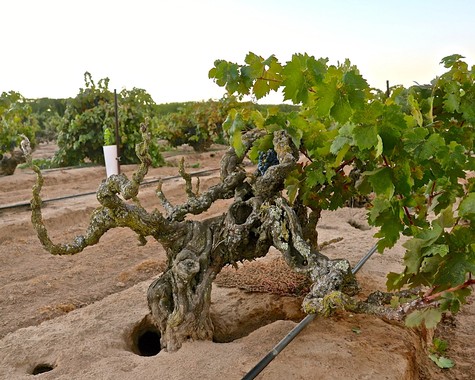
Ancient vine Zinfandel in Mokelumne River-Lodi's Rous Vineyard, planted in ultra-sandy soil.
2021 Harney Lane Winery, Lizzy James Vineyard, Mokelumne River-Lodi—What's amazing is how this ancient vine planting (oldest vines, 1904) is always so different from Rous Vineyard, despite being located barely 200 yards away. It is also the sandiest site in Lodi, producing a floral red berry/cherry profile; here, with a trace of pencil wood-like French oak, and a zesty, bright, upbeat medium body retaining the flowery red fruit character all the way through a finesseful finish.
2020 Mettler Family Vineyards, HGM Vineyard, Mokelumne River-Lodi—Another Alpine Rd. (close to Lizzy James) east side growth, exuding the east side typicity of bright red cherry in the nose and round, fleshy, supple medium-full body, allowed to shine with virtually zero oak influence (aged strictly in neutral French oak).
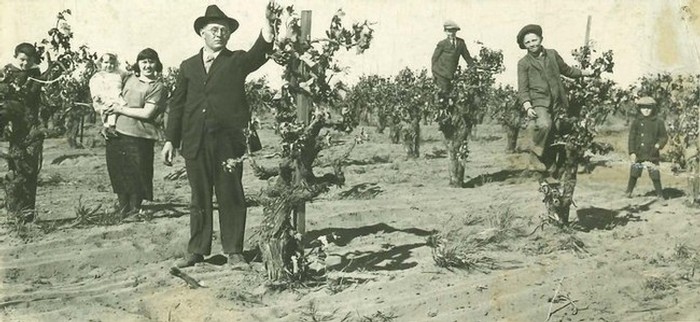
1921 photograph of the Mettler family on the site of the present-day HGM Ranch (east side of Mokelumne River-Lodi): Henry George Mettler in front, with a young Carl Mettler (right), father of Mettler Family Vineyards' current family patriarch Larry Mettler.
2021 Michael David Winery, Lodi—This internationally known brand has come a long way since its "7 Deadly Zins" days; this value-priced bottling (less than $20) shows off the pungent, generous red/blackberry and earth-toned (herby/loamy) characteristics of Lodi-grown fruit, couched in a svelte, easy textured medium body, handsomely framed by subtle toasted oak.
2021 St. Amant Winery, Mohr-Fry Ranch, Mokelumne River-Lodi—Sourced from the Fry family's early 1940s blocks, another quintessential Lodi style varietal in its fragrant/floral red berry profile tinged by a mild loamy earthiness; easy, rounded, notably balanced medium body, emphasizing the varietal character within the scope of the broader appellation's sensory signatures.
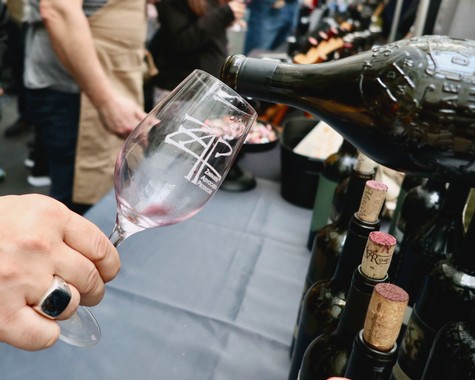
Lodi-grown Zinfandel is being poured at the Lodi Wine table during the 2024 ZAP Grand Tasting.
2021 Macchia Wines, Generous, Mokelumne River-Lodi—Another, (as the name implies) more "generous" heaping of Mohr-Fry-grown fruit, with the characteristically floral, slightly earthy nuances; its rounded, easy textured, medium-full body encapsulating exuberant varietal berryishness, amplified all the more by a touch of sweet oak.
2021 LangeTwins Family Winery & Vineyards, Starr Vineyard, Mokelumne River-Lodi—Exciting new bottling from this winery's single vineyard portfolio, meant to put "sense of place" at least on par with varietal character. In a way, this particular east side Lodi growth is more "Lodi" than most Lodi bottlings in its true-to-the-appellation black tea-like iteration of the grape; a little less emphasis on earthiness, and a little more emphasis on red cherry/berry qualities, zesty and lithe in its medium-weight body, holding firm within its sturdy structuring through an even-keeled flow of the pure berry/tea leaf character, completely unimpeded by oak.
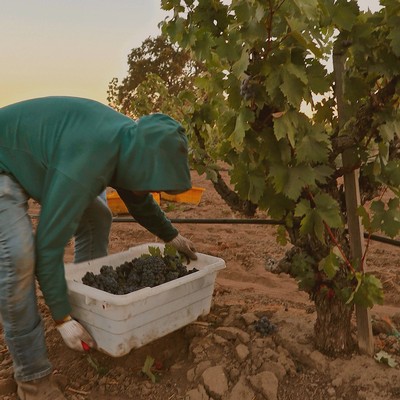
West side Mokelumne River-Lodi Zinfandel harvest in Cherryhouse Vineyard, owned and farmed by the Perlegos family.
2021 Christopher Cellars, Cherryhouse Vineyard, Mokelumne River-Lodi—Quintessentially fragrant, flowery Lodi profile; red cherry perfume manifested in sleek, vibrant, acid-driven medium body in the "new" low intervention style fermented on native yeast and minimizing the influence of oak.
2018 Oak Ridge Winery, 1906 Vintners, Mokelumne River-Lodi—This label, paying homage to the winery founders Maggio family's arrival from Italy, represents the brand's top-of-the-line, made from their oldest vineyards (planted in the 1950s). The wine is very "west side Lodi," ripe fruit toned with perceptively earthy nuances, rounded and medium-full.
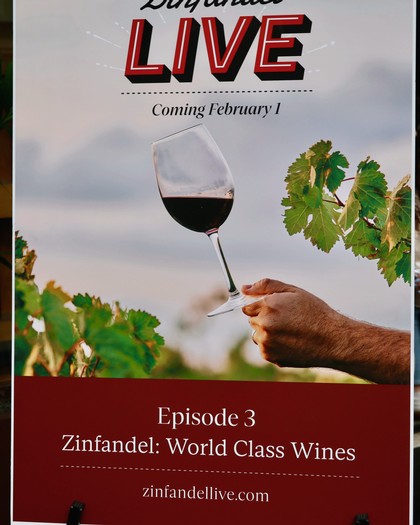
Brochure for upcoming zinfandellive.com event organized by Zinfandel Advocates & Producers.